|
 Hand forged chisels and slicks, looking for advice
#26661
06/18/11 08:34 PM Hand forged chisels and slicks, looking for advice
#26661
06/18/11 08:34 PM
|
Joined: Apr 2011
Posts: 41
nebruks
 OP
OP
Member
|
OP

Member
Joined: Apr 2011
Posts: 41 |
Hand forged chisels and slicks, looking for advice Hello everyone up here. I and my friend (master blacksmith) made chisels and a slick for my upcoming Timber Framing project. He made the steel parts. I made handles and leather tip guards. In my opinion chisels and the slick came out very high quality. So the idea was born - to start my Timber Framing hand tool company and export them worldwide. Is there anyone who can give me some advice or some dealer/manager or craftsmen who are interested to take apart in my new idea. Chisels ar made from high quality carbon steel. The steel is fully hand forged, we don't use a pneumatic hammer. The facture of the tools looks antique. Handles are made from ash tree and then linseed oiled. They come with handmade leather tip guards. Chisel width: 2" and 1 and 1/2" Slick width: 3" Thank you. Jacob Here is a link to flickr photostream: http://www.flickr.com/photos/64220150@N06/sets/72157626991499540/ 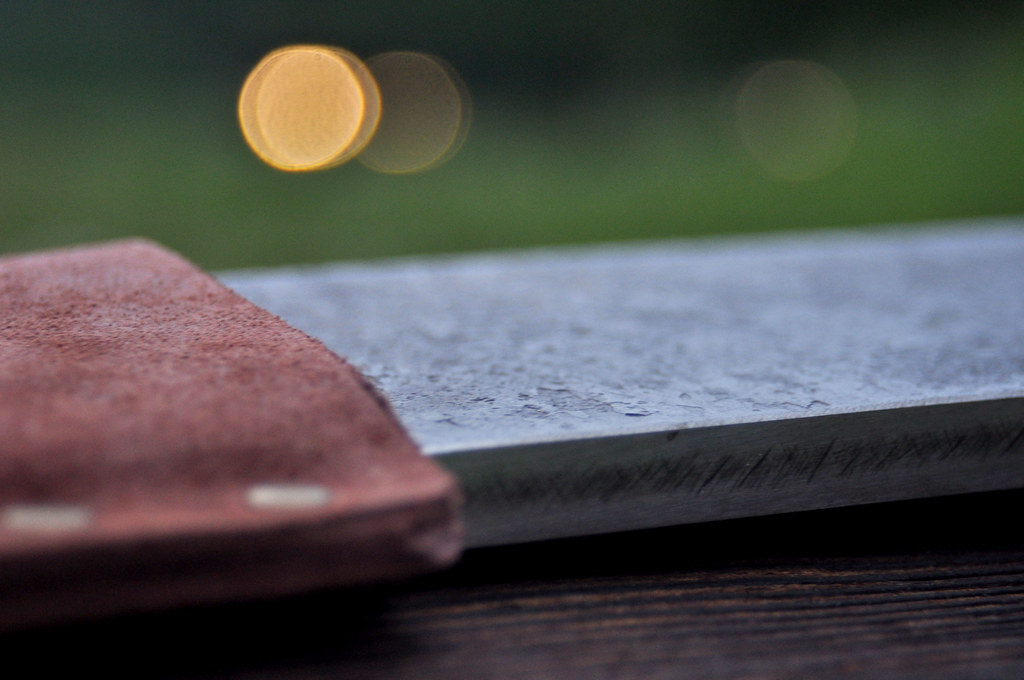 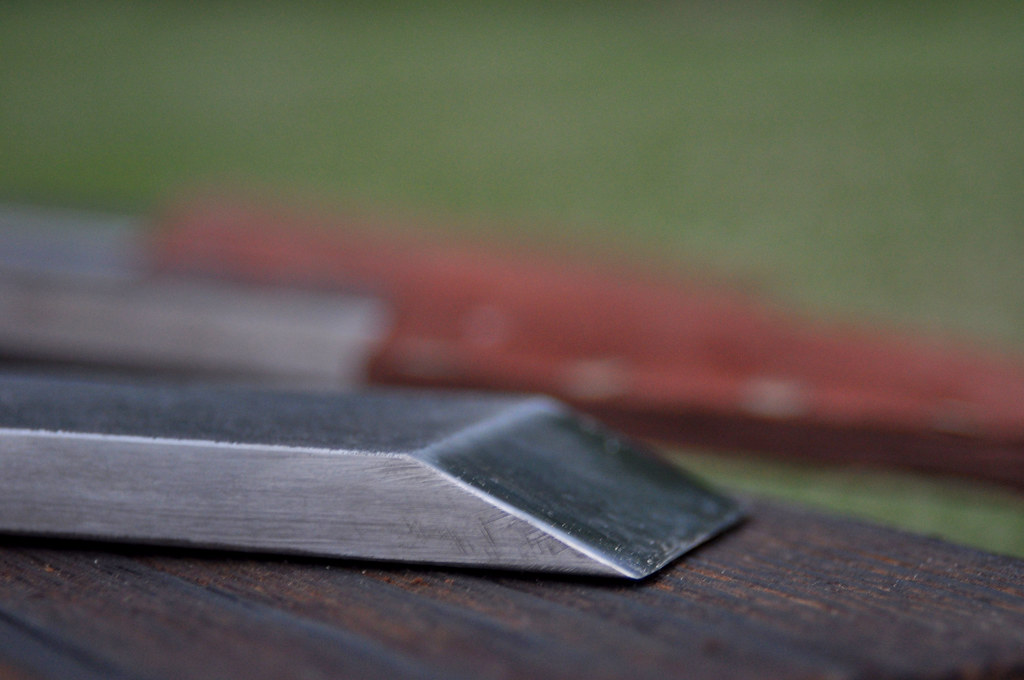 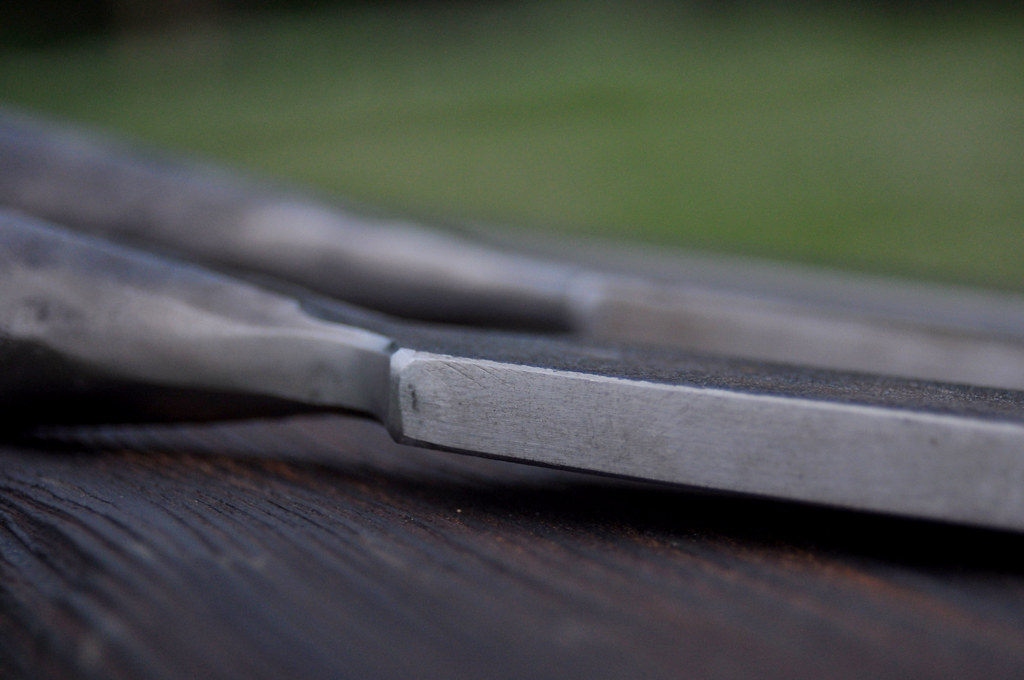  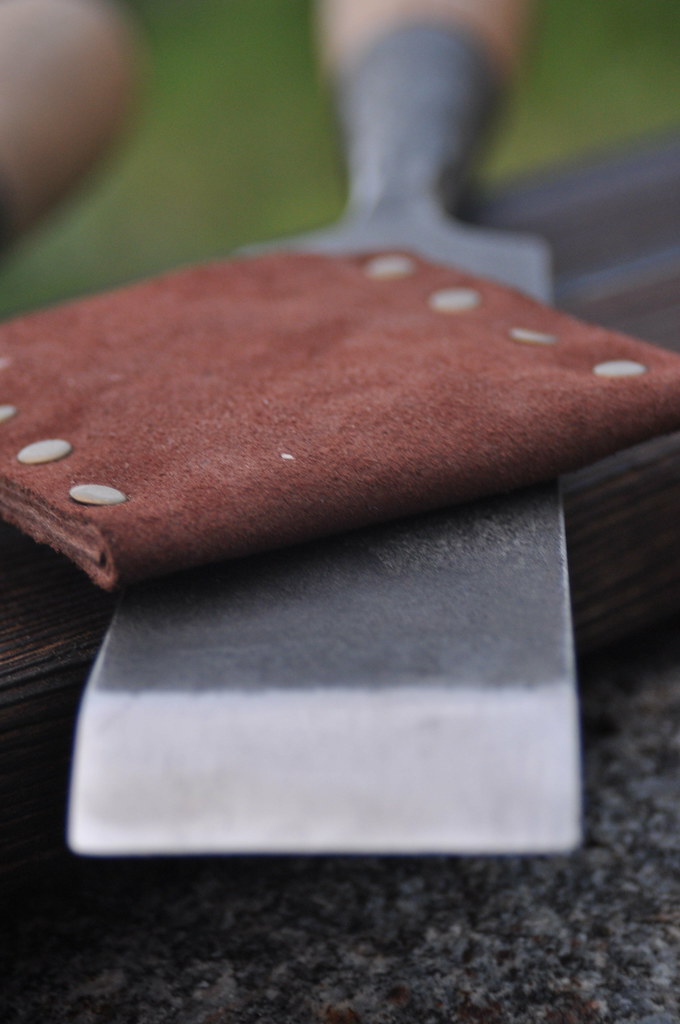 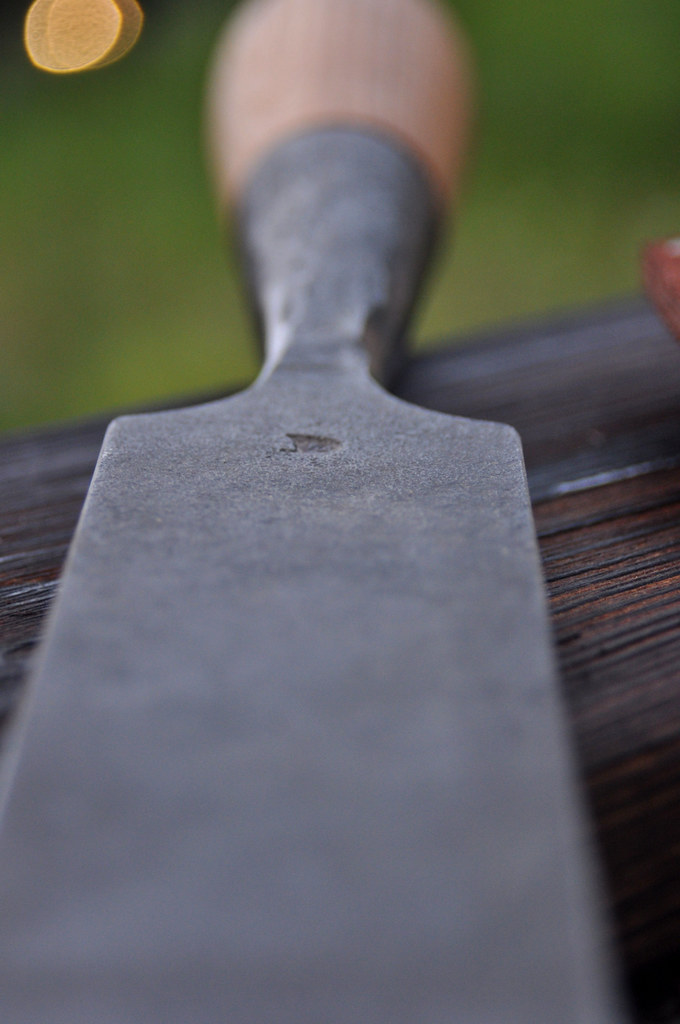 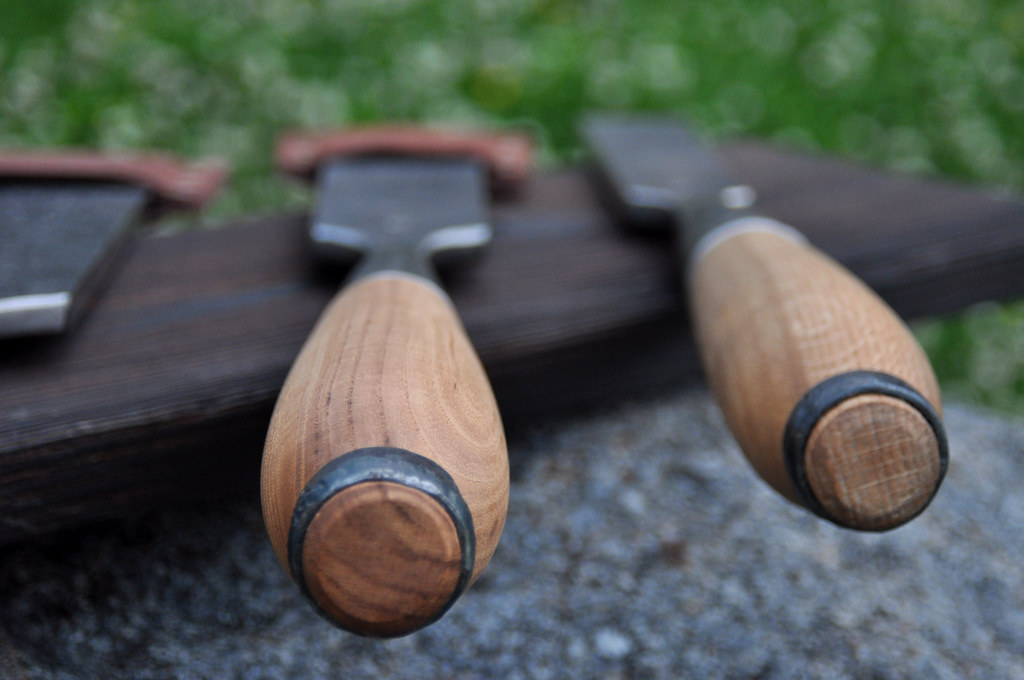   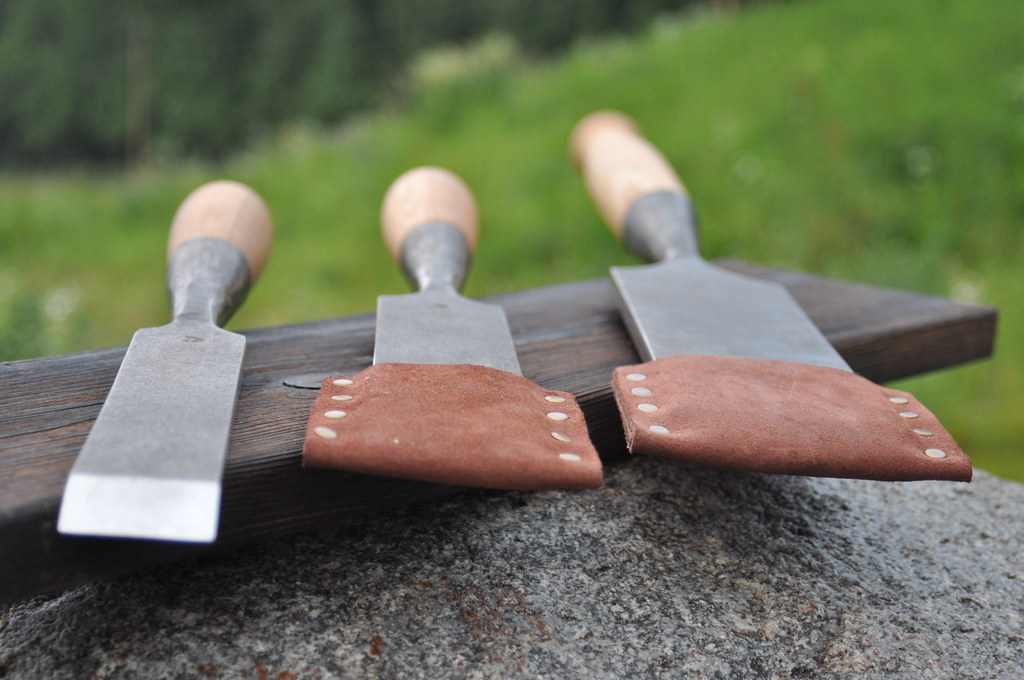 [img] http://farm6.static.flickr.com/5311/5845851423_0da2649bc4_b.jpg[/img]
|
|
|
 Re: Hand forged chisels and slicks, looking for advice
#26666
06/19/11 01:19 PM Re: Hand forged chisels and slicks, looking for advice
#26666
06/19/11 01:19 PM
|
Joined: Feb 2006
Posts: 718
Dave Shepard

Member
|

Member
Joined: Feb 2006
Posts: 718 |
That's very impressive! How did you form the socket?
Member, Timber Framers Guild
|
|
|
 Re: Hand forged chisels and slicks, looking for advice
[Re: nebruks]
#26671
06/20/11 01:33 PM Re: Hand forged chisels and slicks, looking for advice
[Re: nebruks]
#26671
06/20/11 01:33 PM
|
Joined: Apr 2002
Posts: 895
daiku

Member
|

Member
Joined: Apr 2002
Posts: 895 |
They look great. How long will they hold an edge? Are the laminated or single piece, and how hard do you temper them? Your most formidable competitor will be Barr Quarton.
--
Clark Bremer
Minneapolis
Proud Member of the TFG
|
|
|
 Re: Hand forged chisels and slicks, looking for advice
#26674
06/20/11 05:19 PM Re: Hand forged chisels and slicks, looking for advice
#26674
06/20/11 05:19 PM
|
Joined: May 2010
Posts: 946
D L Bahler

Member
|

Member
Joined: May 2010
Posts: 946 |
This thread is also to be found over at the tool forum, where it seems a little more active.
DLB
|
|
|
 Re: Hand forged chisels and slicks, looking for advice
[Re: daiku]
#26675
06/20/11 08:49 PM Re: Hand forged chisels and slicks, looking for advice
[Re: daiku]
#26675
06/20/11 08:49 PM
|
Joined: Apr 2011
Posts: 41
nebruks
 OP
OP
Member
|
OP

Member
Joined: Apr 2011
Posts: 41 |
Heido.
These chisels in the pictures are made out from a spring. The blacksmith works also with laminated techinques. He makes Damascus knifes and swords.
I have worked with Gransfors axes and comparing with them our chisels hold an edge as long as Gransfors. I will ask the blacksmith tomorrow about the tempering and making of laminated chisels.
|
|
|
 Re: Hand forged chisels and slicks, looking for advice
#26677
06/20/11 09:28 PM Re: Hand forged chisels and slicks, looking for advice
#26677
06/20/11 09:28 PM
|
Joined: Feb 2006
Posts: 718
Dave Shepard

Member
|

Member
Joined: Feb 2006
Posts: 718 |
If you could also ask about how he forms the socket, I'd appreciate it. Nobody I have asked has been able to tell me.
Member, Timber Framers Guild
|
|
|
 Re: Hand forged chisels and slicks, looking for advice
[Re: Dave Shepard]
#26709
06/26/11 12:35 PM Re: Hand forged chisels and slicks, looking for advice
[Re: Dave Shepard]
#26709
06/26/11 12:35 PM
|
Joined: Apr 2011
Posts: 41
nebruks
 OP
OP
Member
|
OP

Member
Joined: Apr 2011
Posts: 41 |
Hi.
About the forming of socket.
I asked blacksmith and he said that he maid the chisels from a one peace spring steel. He formed the socket on a round template with a hammer while working with highly tempered steel.
He will make next peaces from swedish Elmax steel. Then we will compare spring steel with Elmax.
Blacksmith said that laminated steel (Damascus) technique is good for knifes but not for chisels.
|
|
|
 Re: Hand forged chisels and slicks, looking for advice
#26723
06/30/11 02:42 PM Re: Hand forged chisels and slicks, looking for advice
#26723
06/30/11 02:42 PM
|
Joined: Apr 2002
Posts: 895
daiku

Member
|

Member
Joined: Apr 2002
Posts: 895 |
What little I know about damascus steel is that it is folded over repeatedly to create the awesome layer patterns. When I talk about a laminated chisel, however, I'm talking about only 2 layers. The back (which creates the cutting edge) is made from very hard steel that holds an edge for a long time. It's only a few mm thick. The rest, including the socket, is made from a milder steel. My understanding is that if the entire chisel was as hard as the back, then it would be so brittle the socket might shatter. All my best chisels and slicks are antiques that were made this way.
--
Clark Bremer
Minneapolis
Proud Member of the TFG
|
|
|
 Re: Hand forged chisels and slicks, looking for advice
[Re: nebruks]
#26724
06/30/11 05:59 PM Re: Hand forged chisels and slicks, looking for advice
[Re: nebruks]
#26724
06/30/11 05:59 PM
|
Joined: Jul 2006
Posts: 21
chichi1golf

Member
|

Member
Joined: Jul 2006
Posts: 21 |
I have no connection to the author of this post.
I also have made many chisels for timberframing. I start with 1.5 or 2" by 3/8 or 1/2 in. thick mild steel. I thickness taper the business end and then forge weld high carbon steel (old file)to the back of the tapered end so the high carbon steel will form the cutting edge. I oil quench the working end.
For the socket, I find it quicker and easier to cut a tringular shaped piece of 1/8 sheet metal and roll it into a socket shape. I forge a short stub on the chisel and fit the socket over the stub. I then mig weld the socket to the stub/chisel.I also weld the socket seam.
I have also forge welded the socket but the mig method is faster and probably stronger. I have beaten the hell out of these chisels and the strength of the socket is a non issue.
If this is an issue for anyone, I could make a chisel for testing.I am not looking to market my chisels but am willing to improve my techniques if they are not up to standard.
The chisels pictured above, look to be very well done.
B
|
|
|
 Re: Hand forged chisels and slicks, looking for advice
#26725
06/30/11 10:41 PM Re: Hand forged chisels and slicks, looking for advice
#26725
06/30/11 10:41 PM
|
Joined: May 2010
Posts: 946
D L Bahler

Member
|

Member
Joined: May 2010
Posts: 946 |
daiku,
from my understanding, modern tool steels, particularly the excellent Swedish and German top of the line varieties, are special alloys capable of being hardened to hold a fine edge, while still maintaining enough flexibility to allow the entire tool to be made of a single chunk of steel. The result is that the tool can be made much faster, and doesn't have the potential for weld failure. Gransfors Bruks manufactures their tools this way, if you want something to go by. All German tool manufacturers that I ever ever purchased tools from or seen their tools make them this way too.
So I would say that if they use a good quality alloy tool steel(such as the mentioned Elmax) then there is no need for lamination. It is redundant, and introduces a potential for flaw and failure.
In the 1800's, they did not have high alloy steels capable of this. In addition, what tool steels they did have were very expensive. And so you have welded pieces because in that era it was cheaper to do, and more reliable since the steel was in fact brittle -more or less straight carbon/iron or at times low alloy.
older tools have the bulk made out of non-alloy iron. I have a few of these tools (one a 250 year old German axe) that I love. Iron require less maintenance than steel, because the carbon alloy in steel makes it attractive to oxygen, causing it to rust. Iron will form a brown or black patina, and then will stop rusting under normal conditions. steel however will just keep on rusting.
|
|
|
|
|